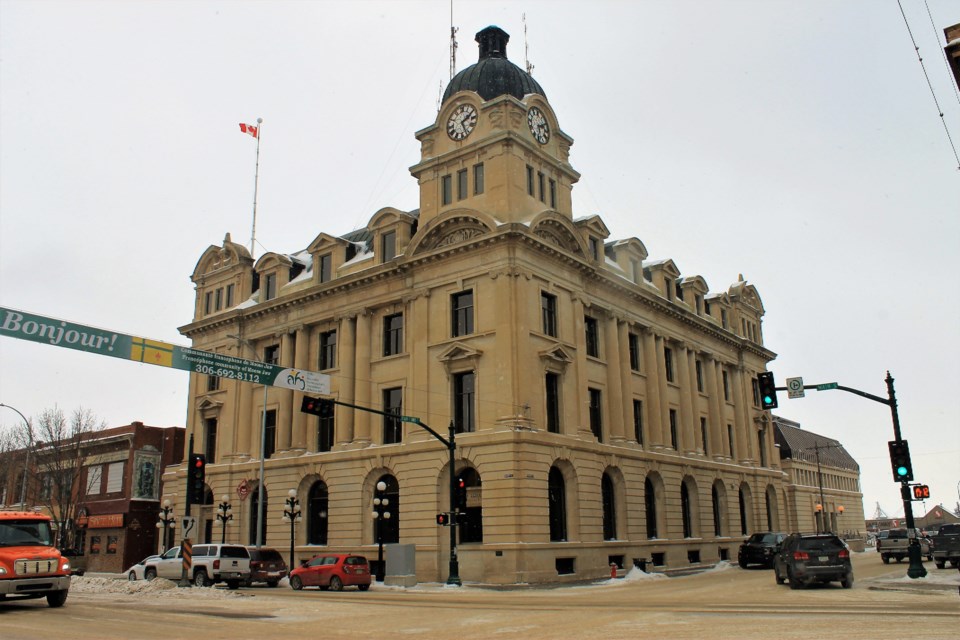Residents could soon have a better understanding of the minimum standards for maintaining boulevards near their properties once a new bylaw is in place.
The current boulevard bylaw dates back to 1992 and has not been amended. The parks and recreation department wants to update the bylaw so it reflects current standards and practices; provides improved clarity and consistency; and aligns with other municipal bylaws.
City administration presented the proposed bylaw changes during city council’s Feb. 10 executive committee meeting. Council voted 6-1 to have city hall advertise the changes to the public for two weeks before bringing back the bylaw to an upcoming regular council meeting for approval.
Coun. Brian Swanson was opposed.
Council discussion
A requirement in the updated bylaw says residents must maintain the boulevards near their residences, said Coun. Chris Warren. He wondered if city hall received complaints from residents about that.
Directors for the parks department and planning and development services department indicated neither received many complaints about having to abide by that direction. However, Derek Blais, director of parks and recreation, noted his department does receive complaints about homeowners modifying boulevards near their properties, specifically, installing retaining walls, fences, or hedges on municipal-owned boulevards.
One notable section in the old boulevard bylaw that was removed focused on the reconstruction of boulevards after municipal construction, he continued. If residents want the boulevards adjacent to their homes rebuilt, they now have to pursue a local improvement program (LIP) policy.
There are some subdivisions in Moose Jaw — particularly newer areas — where the boulevard is on the property side of the sidewalk, Blais told Swanson. It is a valid point, Blais acknowledged, that homeowners there are not allowed to develop near those boulevards, even though that conflicts with what has been done in those areas.
“We might be making a whole bunch of properties non-compliant in doing that,” Swanson said.
One big concern Swanson had about the proposed boulevard bylaw is it now allows the bylaw enforcement officer to enter homeowners’ property without permission. He thought it was acceptable for a water meter reader to enter properties but didn’t think it was appropriate for the bylaw enforcement officer to do so.
There are other bylaws that allow that officer to enter properties without permission, such as the property maintenance bylaw, explained Michelle Sanson, director of planning and development. However, that can only happen during the day during normal business hours. Bylaw enforcement officers would have to leave and come back with a warrant if homeowners tell them to go away.
Proposed bylaw changes
There are 18 changes that the parks and recreation department is proposing to be made to the boulevard bylaw. Some changes include:
- Definitions have been updated for terms such as boulevard, private tree, public tree, city lands, working day and private crossing;
- A list of items has been added that indicates what is not permitted on boulevards, such as litter, weeds, hazardous objects/materials, domestic animal feces, building materials, holes or ruts that pose actual or potential health, fire or safety hazard, anything that attracts rodents, abandoned machinery, and graffiti;
- A requirement has been added for owners to keep private trees trimmed above sidewalks and streets;
- Property owners are now wholly responsible for maintenance of the boulevard and any vegetation, structures or other improvements on it other than trees, which the municipality looks after;
- A section has been added that the municipality may disturb an existing boulevard treatment without notice in emergency situations or for service connection replacements, but in scheduled work will provide four days’ notice;
- Removed the 15-day period for adjacent property owners to submit written concerns but kept the requirement to notify property owners of adjacent properties that an application has been approved;
- Increased the maximum fine amounts to align with other bylaws.
The next executive committee meeting is Feb. 24.


.png;w=120;h=80;mode=crop)

